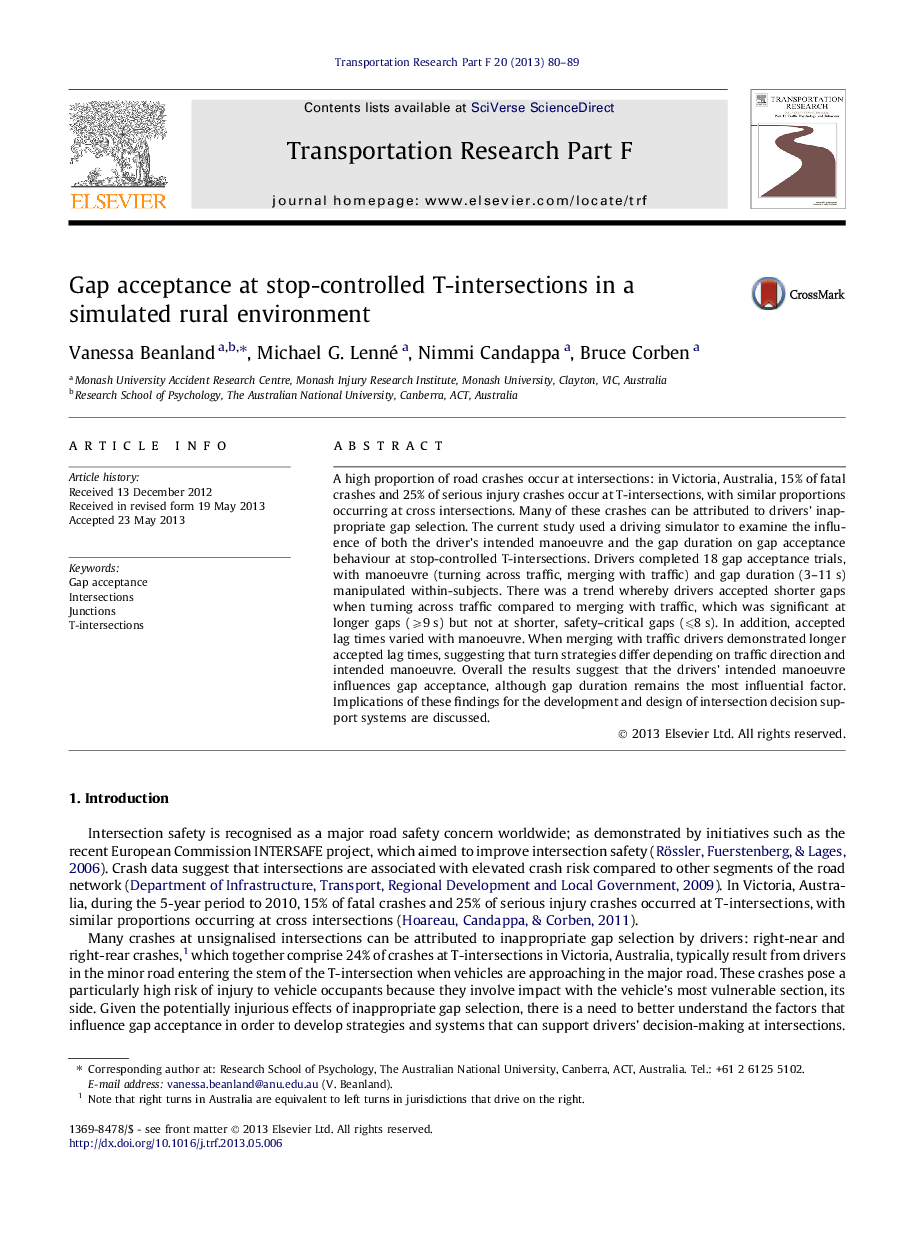| کد مقاله | کد نشریه | سال انتشار | مقاله انگلیسی | نسخه تمام متن |
|---|---|---|---|---|
| 897793 | 1472460 | 2013 | 10 صفحه PDF | دانلود رایگان |

• Simulator study of gap acceptance and turn execution T-intersections.
• Manipulated driver’s intended manoeuvre and gap duration.
• Intended manoeuvre influences turn execution and to a lesser extent gap acceptance.
• Effect of manoeuvre on gap acceptance was most obvious at longer, non-safety–critical gaps.
A high proportion of road crashes occur at intersections: in Victoria, Australia, 15% of fatal crashes and 25% of serious injury crashes occur at T-intersections, with similar proportions occurring at cross intersections. Many of these crashes can be attributed to drivers’ inappropriate gap selection. The current study used a driving simulator to examine the influence of both the driver’s intended manoeuvre and the gap duration on gap acceptance behaviour at stop-controlled T-intersections. Drivers completed 18 gap acceptance trials, with manoeuvre (turning across traffic, merging with traffic) and gap duration (3–11 s) manipulated within-subjects. There was a trend whereby drivers accepted shorter gaps when turning across traffic compared to merging with traffic, which was significant at longer gaps (⩾9 s) but not at shorter, safety–critical gaps (⩽8 s). In addition, accepted lag times varied with manoeuvre. When merging with traffic drivers demonstrated longer accepted lag times, suggesting that turn strategies differ depending on traffic direction and intended manoeuvre. Overall the results suggest that the drivers’ intended manoeuvre influences gap acceptance, although gap duration remains the most influential factor. Implications of these findings for the development and design of intersection decision support systems are discussed.
Journal: Transportation Research Part F: Traffic Psychology and Behaviour - Volume 20, September 2013, Pages 80–89